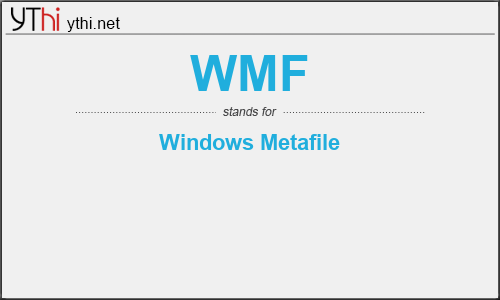What does WMF mean? What is the full form of WMF?
The Full Form of WMF is Windows Metafile.
Windows Metafile (WMF) is an image file format originally designed for Microsoft Windows in the 1990s. The original Windows Metafile format was not device-independent (though could be made more so with placement headers) and may contain both vector graphics and bitmap components. It acts in a similar manner to SVG files. WMF files were later superseded by Enhanced Metafiles (EMF files) which did provide for device-independence. EMF files were then themselves enhanced via EMF+ files.
Essentially, a metafile stores a list of records consisting of drawing commands, property definitions and graphics objects to display an image on screen. The drawing commands used are closely related to the commands of the Graphics Device Interface (GDI) API used for drawing in Microsoft Windows.
There are three major types of metafiles – a WMF is a 16-bit format introduced in Windows 3.0. It is the native vector format for Microsoft Office applications such as Word, PowerPoint, and Publisher. As of 2017 revision 14 of the Windows Metafile Format specification is available for online reading or download as PDF. EMF files, which replaced WMF files, work on the same principle only it is a 32-bit file format that also allows for the embedding of private data within “comment” records. EMF+ is an extension to EMF files and embedded in these comment records, allowing for images and text using commands, objects and properties that are similar to Windows GDI+


Leave a Reply
You must be logged in to post a comment.